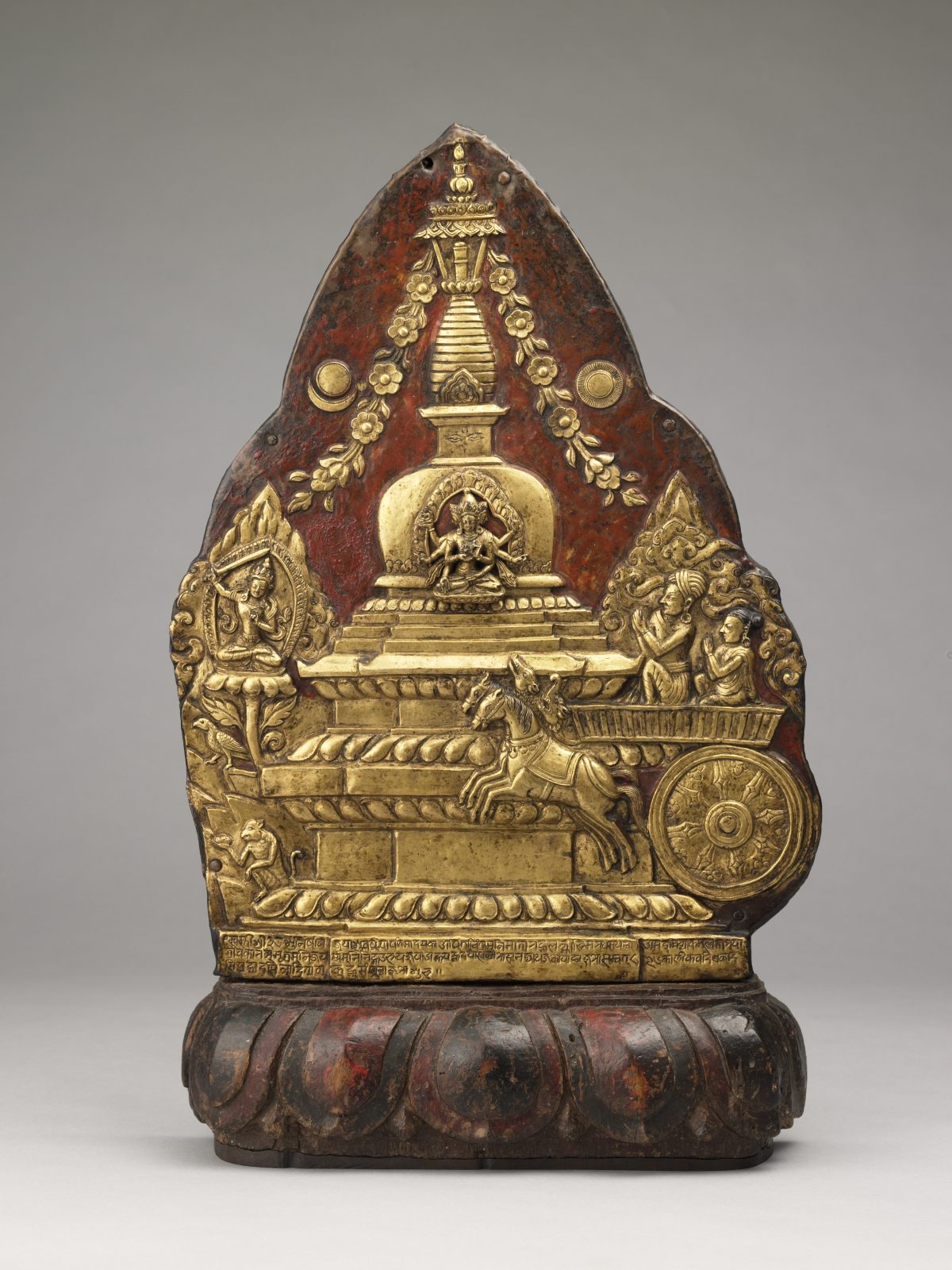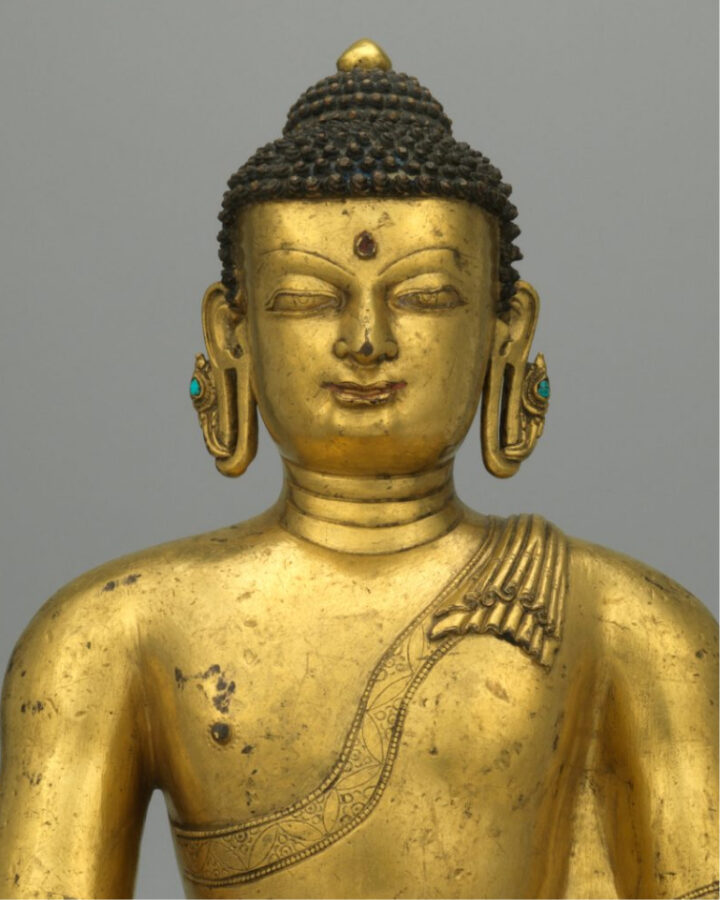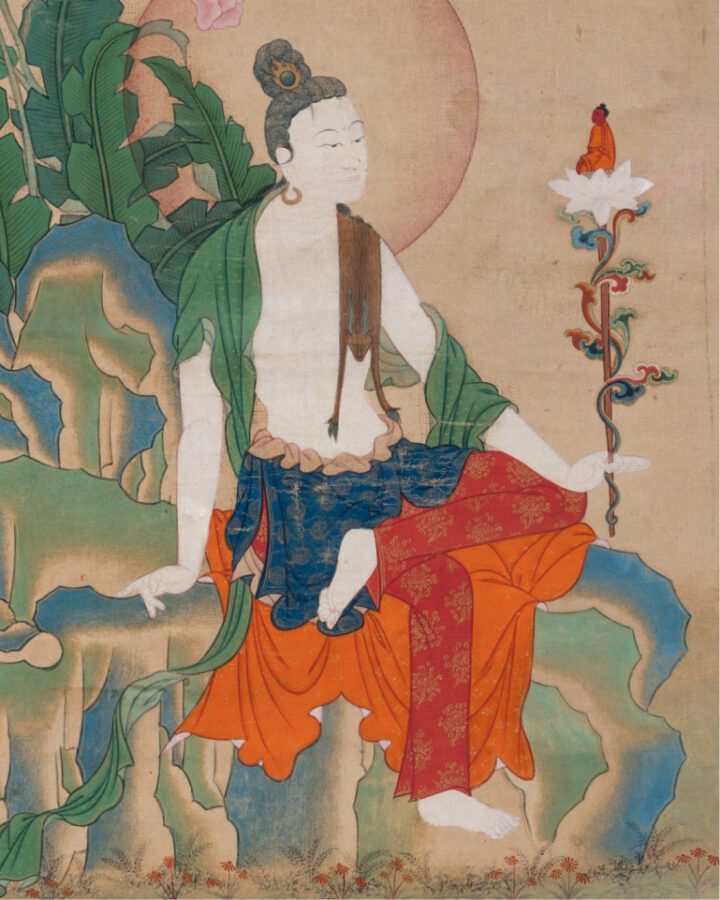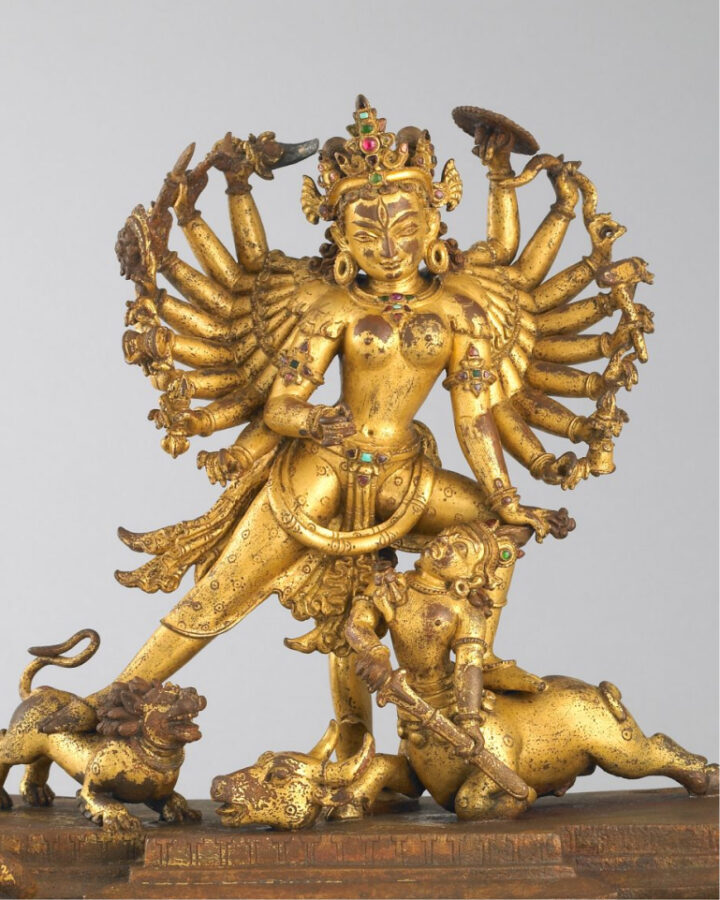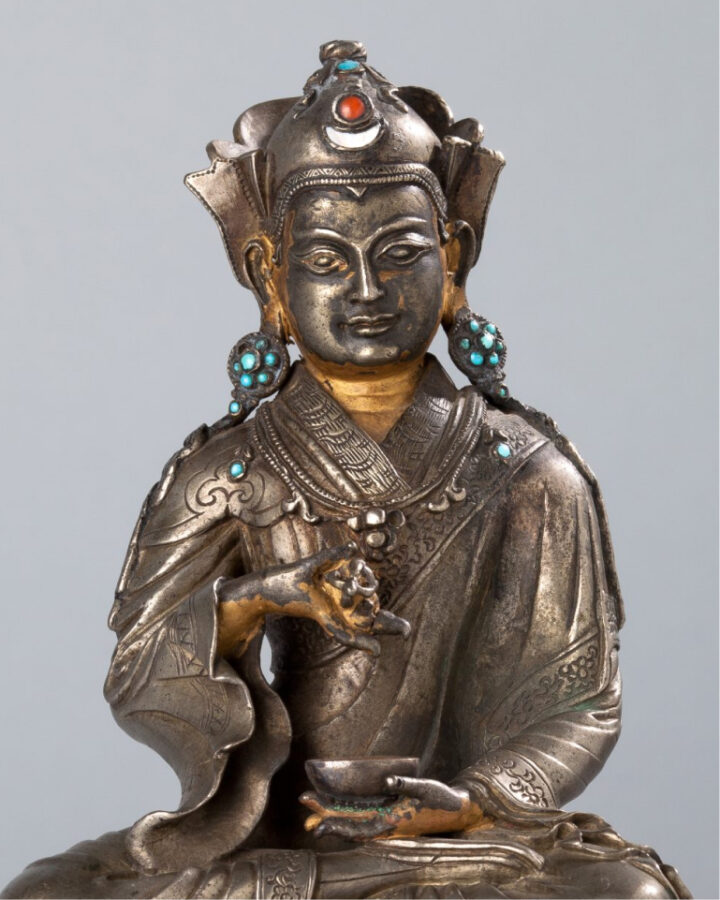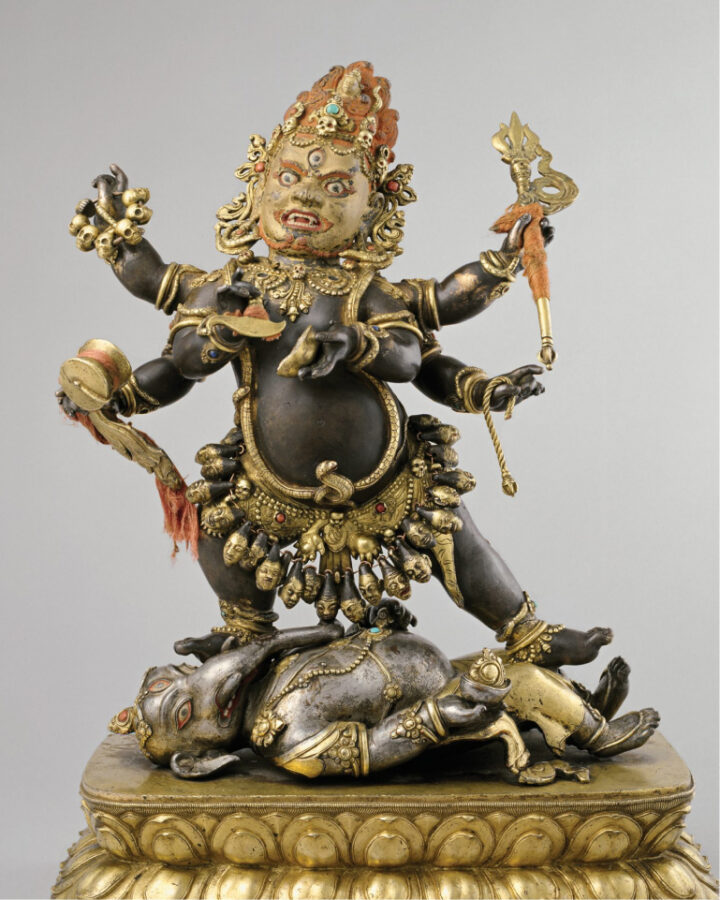Stupas are monuments that were originally built to contain cremated remains of Buddha Shakyamuni, his disciples, important monks, and other materials and symbolic relics associated with the Buddha’s body, teachings, and enlightened mind.
As representations of the Buddha’s presence in the world, stupas and their contents—texts, relics, tsatsas, and other items—continue to be important objects of Buddhist worship. The original form of stupas was an earthen dome-shaped mound containing remains in reliquary vessels or urns deposited within the innermost core. The dome would often be successively enlarged and surrounded by a path for walking around in a clockwise direction and veneration (circumambulation). Stupas now take many forms, from small votives to large structures, and can contain relics or other sacred objects.

